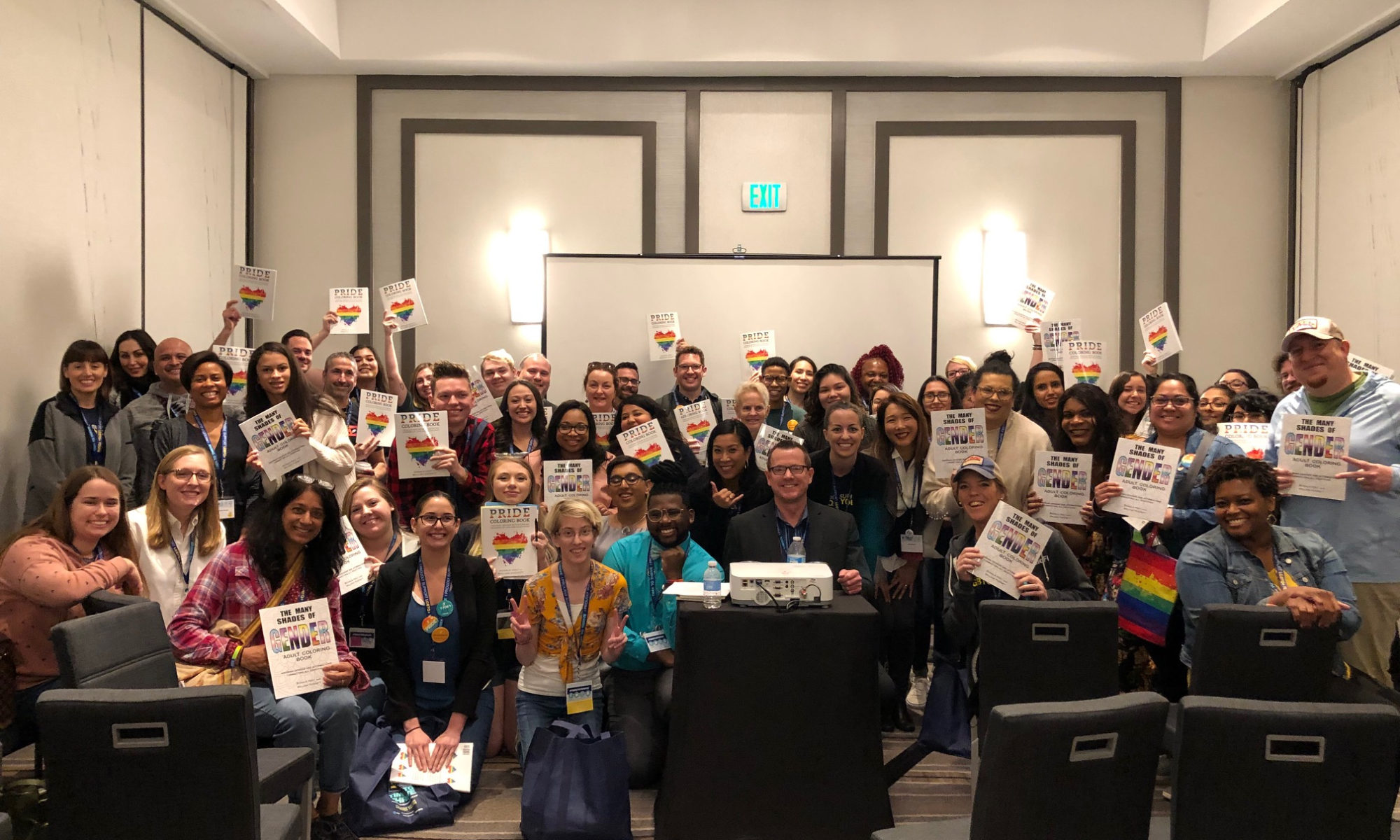This workshop consisted of reviewing a LGBTQ themed vignette. Attendees were divided into small breakout groups, which allowed an experiential learning perspective. After discussing the vignette as a smaller group, the workshop attendees reconvened to discuss the case with Dr. Holt and Sameer Jha as co-facilitators. The following topics were discussed: LGBTQ+ terminology; the difference between sexuality and gender identity and at what age each can present in youth; issues LGBTQ POC face, including coming out, premature disclosure, internalized trans and homophobia; aspects of confidentiality that counselors should consider when working with gender and sexual diverse students; how to help someone come out; and the mental and physical health disparities found in LGBTQ youth.
The audience consisted of Time to Thrive conference attendees from across the country. After the workshop Dr. Holt gave away copies of his PRIDE and GENDER coloring books.
Audience feedback/impact of this presentation:
I really liked how the concepts were framed. The presenters accepted comments well and kept discussion open, but focused. Learned how to explain to parents: Gender is who you want to go to sleep as whereas sexuality is who you want to sleep with.- 25 y/o youth program coordinator
Fantastic! I learned how to be mindful as a future counselor when supporting our future LGBTQ students. – 28 y/o graduate student
It was great to hear the different perspectives of those in the group and personal experiences. I learned the difference between gender identity and sexual orientation; LGBTQ youth are at higher risk due to society’s negative impact; and largest LGBTQ group is bisexual. – 32 y/o school counselor
Wish we had more time, but excellent session. I learned the different ways to talk with youth around gender identity and orientation. – 26 y/o social worker
I will share information with colleagues and be more inclusive at schools I work in. I learned how to discuss with someone who might be struggling with their identity. – 34 y/o counselor
I learned to keep listening and learning. – 46 y/o vice principal
Good points of discussion to open communications with coworkers and clients. I learned to be visible, be open, and be a resource. – 25 y/o HIV prevention specialist
The collective wisdom of the group was skillfully harnessed by the facilitators along with their content. – 41 y/o psychologist
I learned to focus on the individual and their needs/wants rather than stereotyping. There is no particular age for coming out. – 23 y/o student
This opened my eyes to how terminology is still constantly evolving and changing and the importance of keeping up with changes. I learned various geographic areas are vastly different places with respect to knowledge and being safe. – 37 y/o therapist
I’m even more motivated to be an even bigger advocate because now I have the language and specific skills. We’ve got a lot of work ahead of us, but it’s continued work from those before us. – 31 y/o educator
I learned how to be more mindful in creating a safe space for my students. I learned basic terms to start understanding about LGBTQ students. – 29 y/o middle school counselor
Conversation is needed that is open and accepting. Not everyone knows everything. – 28 y/o school counselor
Listen. It’s ok to ask how someone identifies. – 40 y/o school counselor
I will continue to talk openly to colleagues and friends about how to support LGBT youth. – 46 y/o research evaluator
Great discussion! Mental health, sexuality, gender identity, race and culture coexist – pay attention! – 27 y/o HIV prevention program manager
Excellent group discussions. Learned to listen and be flexible while the individual discloses or continues to discover who they are.- 31 y/o
It was very informative and I will be able to take what I learned to give an even higher level of care. – project implementer
Having an open conversation with LGBT POC where they are centered with their issues helps me understand. I learned how LGBT people of color are affected by the intersections of race, orientation, and gender. – 17 y/o student
